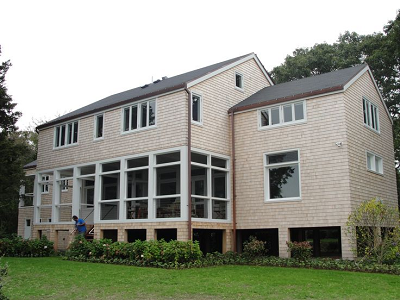Your foundation is what keeps your home above ground, but there are times when it starts to sink. It is important to know what causes this so that you are able to notice it, as well as take the right preventative measures.
Causes of Foundation Sinking
There are many factors that might cause foundation settlement and movement that all homeowners need to be aware of. These can include:
· Building on expansive clay
· Building on improperly compacted fill soils
· Building on compressible fill soils
· Improper maintenance around foundations
When it comes to most expansive soil problems, water is the primary culprit. Specific properties of certain soils might shrink or swell when the moisture levels start to vary. How much movement this causes is different among different types of soil.
In general, the soils that are the most susceptible to this issue are those that have a high clay content. This also means that the least affected soils are those that have the lowest clay content. No matter how much clay, when soil is the cause of the movement, it is not always even. There might be areas where the movement is quite pronounced and others where it is more significant.
When the base of a foundation is comprised of soils that are unstable, there is a tendency for the movement of the soil to be transmitted to the foundation. It is rare for soil movement to be uniform, so the foundation is then subjected to an upheaval or a differential. This problem can occur in slap, beam type and pier foundations.
If the soil below a foundation swells in a uniform way, there is often not a problem. However, when only a part of the foundation settles after swelling, issues are relatively common. Damage, such as cracks, happen after the differential movement. Related issues might include:
· Structural damage
· Lost real estate value
· Potential accidents
· Tripping hazards
· Unsightly cracks
· Poor drainage
· Rough floors
· Equipment malfunctions
Warning Signs of Slab or Foundation Failure
When movement and sinking happen, your house will usually tell you, both inside and out. The interior warning signs of this can include:
· Cracked sheetrock
· Misaligned windows and doors
· Cracks in the floor
You might also notice certain warning signs when you take a look at the outside of your home. The exterior warning signs of this can include:
· Wall rotation
· Cracked bricks
· Displaced moldings
· Separation visible around your windows, walls or garage door
· Cracked or broken foundation
The value of your structure can be negatively impacted by settlement and sinking, so it is imperative that you get it taken care of quickly. In some instances, this can also make the structure too dangerous to inhabit.
If you feel as though your foundation is starting to sink, it is important that you do not delay having it inspected by a professional. Make sure to have them come out as soon as possible since issues that are minor can become worse fast. All repairs should be done by someone with experience to ensure they are done right.


